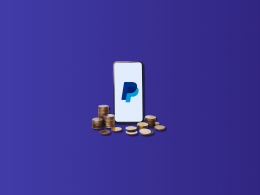Having an online presence is often a must whether you’re running a business, showcasing a portfolio, or even sharing personal experiences through a blog. This is where website builders come into play. These platforms are like the Swiss Army knives of web design – they are packed with all the tools you need to create a website, no coding skills required.
Choosing the right website builder should not only make your website look professional but also be easy to use, have all the features you need, and fit within your budget. The wrong choice can lead to endless frustrations, wasted time, and money.
Enter our Wix vs Squarespace comparison of two of the heavyweights in the website builder ring. In this article, we’ll dive deep into the world of Wix and Squarespace, comparing them on various fronts to help you make an informed decision. Let’s get started!
What are Wix and Squarespace?

Wix is a user-friendly online platform that allows individuals and businesses to create their own websites without needing to know how to code. It offers a wide range of customizable templates and a drag-and-drop interface, making it easy for anyone to design and launch a professional-looking website.

Squarespace is a website builder known for its sleek and sophisticated design templates. It provides a simple yet powerful set of tools for creating stylish websites, blogs, and online stores, catering especially to creative professionals and businesses looking for a visually appealing web presence.
Wix vs Squarespace: Ease of use
Now we will start our comparison of Wix and Squarespace and evaluate each key feature to help you decide which website builder to choose. Let’s begin with the ease of use.
Wix: Ease of use
Imagine walking into a room filled with all sorts of furniture and decorations, and you have the freedom to arrange everything exactly how you want it. That’s Wix for you. Known for its drag-and-drop interface, Wix is like the LEGO of website builders – it lets you play around with elements on your website as easily as you would with LEGO bricks.
Wix is intuitive – you just pick what you like (be it text boxes, images, or other elements) and drop them where you want them on your webpage.
The beauty of Wix lies in its simplicity combined with its depth of options. You can start with a basic template and then tweak it to your heart’s content, adding videos, maps, and even fancy animations without ever touching a line of code. It’s like having a magic wand that lets you create a professional-looking website with a few clicks and drags.
Squarespace: Ease of use
Squarespace is the go-to for those who prioritize design but still want something straightforward and user-friendly. While Squarespace also offers a drag-and-drop interface, it’s a bit more structured than Wix. This is great for keeping things clean and cohesive but might feel a tad limiting if you want to go wild with customization.
Templates in Squarespace are not only visually appealing but also optimized for various purposes, be it blogging, ecommerce, or portfolios. And yes, you can tweak them, but the underlying design aesthetic stays consistent, ensuring your site always looks polished.
Wix vs Squarespace: Design and flexibility
Both Wix and Squarespace offer the tools to create a stunning website, but your choice depends on how much freedom you want and how proficient you are in website design.
Wix: Design and customization
The temples are pre-designed website layouts created by Wix’s own team. Wix offers a massive array of 900+ free templates with drag-and-drop features. You can also start with a blank canvas if you prefer that option.
So whether you’re looking to start a blog about your cooking adventures, create a page for your wedding, launch a site for your non-profit, or set up an online hub for your business consultancy, there’s a template for pretty much everything. Wix has organized its templates into categories like Business, Creative, Community, etc., making it easier to find what you’re looking for.
Wix’s options for website design
The quality of Wix’s templates is great. They are professionally designed, look sleek, and are customizable to a pixel. You can change colors, rearrange layouts, and add or remove parts – all to make your website look and feel exactly how you envision it. However, with great power comes great responsibility – it’s easy to get carried away and create a cluttered or inconsistent design if you’re not careful.
It’s ideal for those who understand website design and want to have complete control over their website’s final look.
Squarespace: Design and customization
Squarespace’s templates are fewer compared to Wix (150+). They’re known for their clean, sophisticated, and modern web designs. It’s perfect for those who want a website that looks like it was made by a top-tier web designer without actually being one.
When choosing a Squarespace template online, you click on a design, and it shows you a demo – a sneak peek of what your website could look like. This demo is filled with sample content to give you an idea and inspire your own design.
Squarespace’s options for website design
Squarespace offers you a few ways to design templates. If you have a clear vision for your website, you can use Squarespace Blueprint. You pick the basics like your site title, color scheme, and the pages you need, and Squarespace helps you put it all together. It’s a step-by-step process of creating your perfect website. If you’re the type who likes to start with a blank canvas, Squarespace has got you covered.
Squarespace also has a faster route to website building, if that’s what you’re after. The software has two main versions – 7.0 and 7.1. In 7.0, different templates offer different features. But in the latest version, 7.1, all templates share the same features and style options, giving you more flexibility to switch things up.
Wix vs Squarespace: New design technologies
Both Squarespace and Wix invest in new technologies to make designing a site simpler and more creative. Wix ADI and Squarespace’s Fluid Engine are two innovative tools that offer interesting solutions. Let’s explore them.
Wix ADI (Artificial Design Intelligence)
Wix ADI is a feature offered by Wix that uses artificial intelligence to help you build a personalized website quickly and easily. Think of it as a virtual assistant that guides you through the website creation process.
Here is how Wix ADI works:
- Gathering information: When you start with Wix ADI, it asks you a series of questions about your needs, preferences, and the purpose of your website. This might include your business type, style preferences, and desired features.
- Automated design creation: Based on your responses, Wix ADI uses AI algorithms to automatically generate a custom website design for you. It selects appropriate layouts, color schemes, fonts, and images that align with your specified preferences.
- Customization options: While Wix ADI provides a great starting point, you’re not stuck with the initial design. You can customize it further by changing layouts, adding new sections, or modifying design elements to better suit your needs.
- Ease of use: Wix ADI is designed for users who may not have the time or skills to design a website from scratch. It simplifies the process, making it accessible even for those with no web design experience.
- Content generation: In some cases, Wix ADI can even help generate basic content for your site, like text and images, which you can then customize or enhance.
Squarespace: The Fluid Engine
The Fluid Engine in Squarespace is a relatively new and advanced layout system designed for creating and editing web pages. It represents a significant upgrade from the classic Squarespace editor, offering more flexibility and control over the design and arrangement of content on your website.
Key features of Fluid Engine include:
- Drag-and-drop interface: Fluid Engine provides a highly intuitive drag-and-drop interface, allowing you to easily place elements (like text, images, buttons, etc.) precisely where you want them on your page.
- Flexible grid system: It uses a grid system that enables you to adjust the size and position of elements more freely compared to the fixed structure of the classic editor. This means you can create more dynamic and visually interesting layouts.
- Responsive design: The layouts you create with Fluid Engine are responsive, meaning they automatically adjust to look great on any device, whether it’s a desktop, tablet, or smartphone.
- Customizable sections: You can add and customize various sections on a page, giving you the ability to tailor each part of your website to match your vision.
- Advanced styling options: With Fluid Engine, you have more sophisticated styling options at your disposal, allowing for finer control over the aesthetics of your site.
Wix vs Squarespace: Apps and extensions
Wix and Squarespace have a different approach to integrations and extensions that they offer. While Wix concentrates on providing a variety of third-party and Wix’s own apps, Squarespace focuses on the in-built features of its extensions.
Wix App Market
Wix’s App Market is packed with over 500 web apps and integrations, offering a vast array of functionalities. This diversity allows you to add all sorts of features to your website, from advanced ecommerce tools to social media feeds, booking systems, and more.
Many of these apps offer a high degree of customization, allowing you to tailor their functions to suit your specific website needs.
If you’re using QuickBooks or Xero for your Wix business accounting, try Synder. It seamlessly integrates with your Wix site to streamline your bookkeeping, automate financial data syncing, and unlock insightful analytics.
Squarespace Extensions
Squarespace Extensions, on the other hand, offers 30+ extensions, which are carefully curated to ensure they meet the platform’s high standards of design and functionality. While the number is significantly lower than Wix, these extensions are typically very polished and integrate seamlessly with Squarespace’s design-centric approach.
Wix vs Squarespace: Ecommerce capabilities
If you are an ecommerce seller, you can use both Wix and Squarespace to set up your shop. Both platforms provide the essential features needed for running a store, including managing inventory, offering discounts, handling product variations, calculating taxes, and more.
There are, however, several significant differences between Wix and Squarespace when it comes to ecommerce. Let’s break them down.
Ecommerce business with Wix
Flexibility in design
Wix offers a more flexible design approach for your online store. You can customize almost every aspect of your ecommerce site, which is great for those who want a unique look and feel.
App Market
Wix has a comprehensive App Market with a wide range of ecommerce apps and integrations. This means you can add advanced functionalities like dropshipping tools, customer reviews, and more.
Payment options
Wix supports a broad range of payment options, including PayPal, credit cards, BNPL solutions, and other global payment methods. You can also opt for integrated Wix Payments. This versatility can be crucial for reaching a wider customer base.
Ecommerce features
Wix provides extensive ecommerce features, including abandoned cart recovery, multiple shipping options, and the ability to sell on multiple channels like Facebook and Instagram.
Ecommerce plans with Wix
Wix offers specialized ecommerce plans that are distinct from their regular website plans, focusing on features essential for online stores like accepting payments. These plans remove the Wix ads from your website and allow you to use a custom domain, rather than Wix’s own domain in the URL. Here are the available ecommerce plans with Wix:
- Core plan;
- Business plan;
- Business Elite plan;
- Enterprise package.
For a detailed description of all plans, please head to Wix vs Squarespace: Pricing and plans section.
Ecommerce business with Squarespace
Aesthetic focus
Squarespace offers a range of sleek, high-quality design ecommerce templates. They are especially appealing for stores that prioritize branding and design aesthetics.
Integrated ecommerce features
Squarespace offers built-in ecommerce features that are less extensive than Wix’s but are seamlessly integrated into its platform. This includes inventory management, secure checkout, and customer account areas.
Choosing between Squarespace and Shopify for your business? Read our article about Squarespace vs Shopify.
Payment options
Squarespace’s payment options are more limited, generally focusing on major providers like Stripe, PayPal, and Apple Pay but still provide a good selection of payment options.
Social media integration
While Squarespace allows for social media integration, it might not be as extensive as Wix in terms of selling directly through these channels.
Ecommerce plans with Squarespace
Squarespace provides 3 ecommerce plans, each with growing capabilities:
- Business plan;
- Basic Commerce plan;
- Advanced Commerce plan;
For a detailed description of all plans, please head to Wix vs Squarespace: Pricing and plans section.
Squarespace vs Wix: Blogging
Choosing between Wix and Squarespace for blogging comes down to your specific needs and preferences. Both platforms offer features like an archive for old posts, social sharing options, and the ability to schedule posts in advance.
Squarespace for blogging
Squarespace maintains its reputation for stunning design, offering a visually appealing platform for bloggers. Squarespace has a solid commenting system, which is essential for engaging with your readers and building a community.
Its blogging tools are well-suited for teams and multi-author blogs, including workflow features that help manage the editorial process, like flagging drafts for review. Squarespace’s in-built SEO and analytical tools give you solid solutions for improving your blog.
Wix for blogging
Wix has significantly upped its game in the blogging arena, making it a strong competitor against Squarespace. Wix now offers enhanced blogging tools such as writer profiles, allowing for a personalized touch for each author. This is particularly useful for blogs with multiple contributors.
Understanding your audience is key in blogging, and Wix’s blog-specific analytics provide valuable insights into reader behavior and preferences. With its improved blog SEO capabilities, Wix ensures your content ranks well in search engine results, boosting your blog’s visibility.
Wix vs Squarespace: Pricing and plans
Wix and Squarespace offer various plans that are tailored to different needs and budgets. We will now review all available plans.
Wix: Pricing and plans
Starting from a basic free version to more advanced, feature-rich premium plans, Wix caters to a very broad user base. While Wix doesn’t give access to a standard free trial, you can cancel the Premium update within 14 days and receive a full refund.
Here is a full list of plans with pricing:
- Free plan: This is not a free trial but actually a free plan that lets you use Wix to build and run your website for free. However, it comes with Wix ads and you can’t use your own domain name.
- Light plan: This plan offers only the basic marketing features and 2GB storage. It removes adds and Wix domain but it doesn’t let you process payments. The annual subscription with the Light plan costs $16/month.
- Core plan: This is the entry-level plan for online selling. It includes all the essential features like accepting online payments, unlimited products, abandoned cart recovery, and sales channels on social platforms. If paid annually, the Core plan costs $27/month.
- Business plan: A step up from the Core plan, it offers additional features such as subscriptions, multiple currencies, automated sales tax for up to 100 transactions per month, and advanced shipping. The annual subscription with the Business plan costs $32/month.
- Business Elite plan: This plan, offers full-scale features including priority support. It’s ideal for larger businesses with high-volume sales and includes all features from the Business plan, plus advanced features like automated sales tax for up to 500 transactions per month and custom reports. For an annual subscription with the Business Elite plan users pay $159/month.
- Enterprise package: Wix also has its largest plan, the Enterprise package which is designed for multi-site management. It doesn’t come with a single price tag and it has many custom-made features, so for quotation, you need to contact Wix directly.
Squarespace: Pricing and plans
Squarespace’s pricing doesn’t include a free plan. You can check out the plans by availing of their 14-day free trial. Their plans range from personal websites to full-fledged ecommerce platforms:
- Personal plan: It covers the essentials for a personal site but lacks features necessary for an ecommerce business. The annual subscription with the Personal plan costs $16/month.
- Business plan: While primarily for general websites, this plan allows for basic ecommerce functionalities, including selling unlimited products and accepting donations. However, it charges a 3% transaction fee on sales. If paid annually, the Business plan costs $23/month.
- Basic Commerce plan: This plan removes transaction fees and adds more ecommerce features, such as customer account creation, Instagram integration, and powerful analytics. For an annual subscription with the Basic Commerce plan users pay $27/month.
- Advanced Commerce plan: The most comprehensive plan, it includes advanced features for ecommerce businesses like abandoned cart recovery, advanced shipping options, and the ability to sell subscriptions. The annual subscription with the Advanced Commerce plan costs $49/month.

Wix and Squarespace: Customer support
Both Wix and Squarespace offer a range of customer support services, each with its own strengths, ensuring that users get the help they need.
Wix: Customer support
Here are the customer support services that Wix provides:
- 24/7 callback service: A standout feature of Wix is its 24/7 phone support through a callback service. This means users can request a call from a Wix support representative at any time.
- Live chat: Wix provides a live chat option, allowing users to get quick answers to their queries.
- Social media support: Users can reach out to Wix for support via their social media channels.
- Forums: Wix offers a community forum where users can ask questions and share advice with other Wix users.
- No email support: Wix currently doesn’t offer email support.
Squarespace: Customer support
Now, let’s take a look at Squarespace’s customer support services:
- 24/7 email response team: Squarespace stands out with its commitment to responding to all email queries, ensuring quick and efficient support.
- Live chat: Squarespace’s live chat is a convenient way for users to get real-time assistance.
- Forum: Similar to Wix, Squarespace offers a forum where users can interact, ask questions, and exchange tips.
- Lack of phone support: Unlike Wix, Squarespace does not currently offer phone support. This might be a consideration for users who prefer direct voice communication.
Wix vs Squarespace: Mobile apps
Both Wix and Squarespace bring to the table mobile app solutions that help not only access the site from mobile devices but also manage the website efficiently.
Wix’s Mobile App
The Wix mobile app is a multi-toolbox when you are on the go. It’s packed with features that let you handle various aspects of your site. The app’s dashboard gives you quick access to orders, subscriptions, blog posts, and more.
With Wix, you can create content like blog posts or new product listings directly from the app. However, note that full site editing (like changing the menu or page design) is limited to sites made with Wix ADI (Artificial Design Intelligence).
Squarespace’s Mobile App
With Squarespace, you can easily add new photos to your site’s galleries or blocks straight from your smartphone. You can write and tweak your blog posts whenever inspiration strikes, no matter where you are. The app lets you manage your online store’s inventory and process orders, which is super convenient for busy store owners.
However, it’s important to know that the Squarespace app doesn’t come with all the bells and whistles of the full website version. For instance, adding certain types of pages or blocks, particularly those using the Fluid Engine, requires using a computer. The app works best with sections created with the classic editor.
Wix or Squarespace: Conclusion
Both Wix and Squarespace have their perks, and the best choice really depends on what you’re looking for in a website builder.
If you’re all about getting creative and want to dive into every detail of your site’s design, Wix is like your artist’s canvas. It gives you the freedom to play around and design your site just the way you want it. On the flip side, if you’re aiming for that sleek, professional look and want a stylish site without spending too much time on the nitty-gritty of design, Squarespace is your go-to.
In the end, whether you go for Wix or Squarespace, you’re picking a winner either way. Both platforms offer fantastic tools that make building and managing a website a whole lot easier, letting you focus on the fun parts of bringing your online vision to life.
Finding the right website builder for small businesses? Check out our article about Wix and Wix alternatives.







Very well written! I always suggest Square space for people who want easy and not too complicated. I feel you have to have some technical knowledge on websites to be able to handle Wix. I think these are both perfect for small businesses who don’t need something too technical.
Hi Liz, thank you for sharing your perspective! It’s great to hear your insights on Squarespace and Wix, especially in the context of small businesses looking for suitable website-building platforms. Squarespace does indeed offer a streamlined, user-friendly experience that many find appealing for its simplicity and elegance, making it a fantastic choice for those who prefer not to delve too deeply into technical details. Wix, with its flexible design options, can require a bit more technical familiarity but also offers extensive customization possibilities for those willing to explore its features. Both platforms provide valuable tools for small businesses aiming to establish a strong online presence without needing to invest in complex web development. Your recommendation adds a helpful perspective for anyone considering these platforms for their business needs.